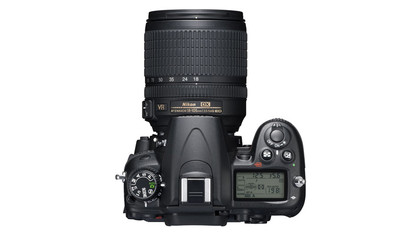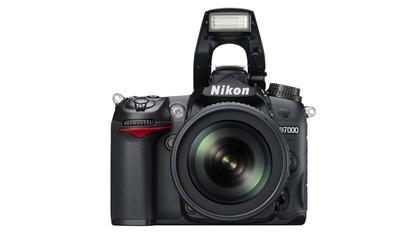Why you can trust TechRadar
Although the D90 isn't a flimsy camera, the D7000 feels a little tougher in the hand, perhaps courtesy of its magnesium alloy body shell and the heftier textured rubber at its key grip points.
With the index finger on the shutter release button, the main grip is just tall enough to accommodate the remaining three right-hand fingers of those with fairly small hands. Photographers with more shovel-like mitts will find that their little finger slips naturally under the camera body.
While the control arrangement on the D7000 is at first glance very similar to the D90's, there are a few subtle changes that make quite a difference to the handling. One of the most significant is the change in the way that the AF and AF point selection modes are selected.

This has been brought about by the introduction of the AF mode button at the center of the focus mode selector switch, which sits at approximately the 4 o'clock point by the lens mount (as you look at the front of the camera).
Instead of using a switch like on the D300S to set the AF mode (Single point, Dynamic or Auto Area) and dipping into the menu to set the number of AF points to use in continuous AF mode or to choose 3D-tracking mode, these options can now be selected by pressing the AF mode button while rotating the sub-command dial beneath the shutter release button on the front of the camera.
Though this is a two-handed operation, it can be carried out with the camera held to the eye as the various options are displayed in the viewfinder as well as the top LCD screen. It's a much slicker integration of the AF modes than with other Nikon DSLRs and we expect to it appear in future models.

Like the D3100, the D7000 has a dedicated live view switch around a video activation button to the left of the natural thumb resting place. The live view control is especially useful as it speeds up the process of composing images on screen and is more intuitive to use than the drive mode dial option found on earlier Nikon D-SLRs.
Sign up for breaking news, reviews, opinion, top tech deals, and more.
Photographers upgrading from a D3100 or a D90 will find the handling changes of the D7000 a fairly logical progression. However, those considering buying a D7000 as a second body to accompany their D300 or D300S may find that it takes a little bit more getting used to with the loss of the AF and metering mode switches.
While we like the new AF system operation, we prefer having a switch to set the metering mode rather than top-plate mounted button that must be used in conjunction with the main command dial.
